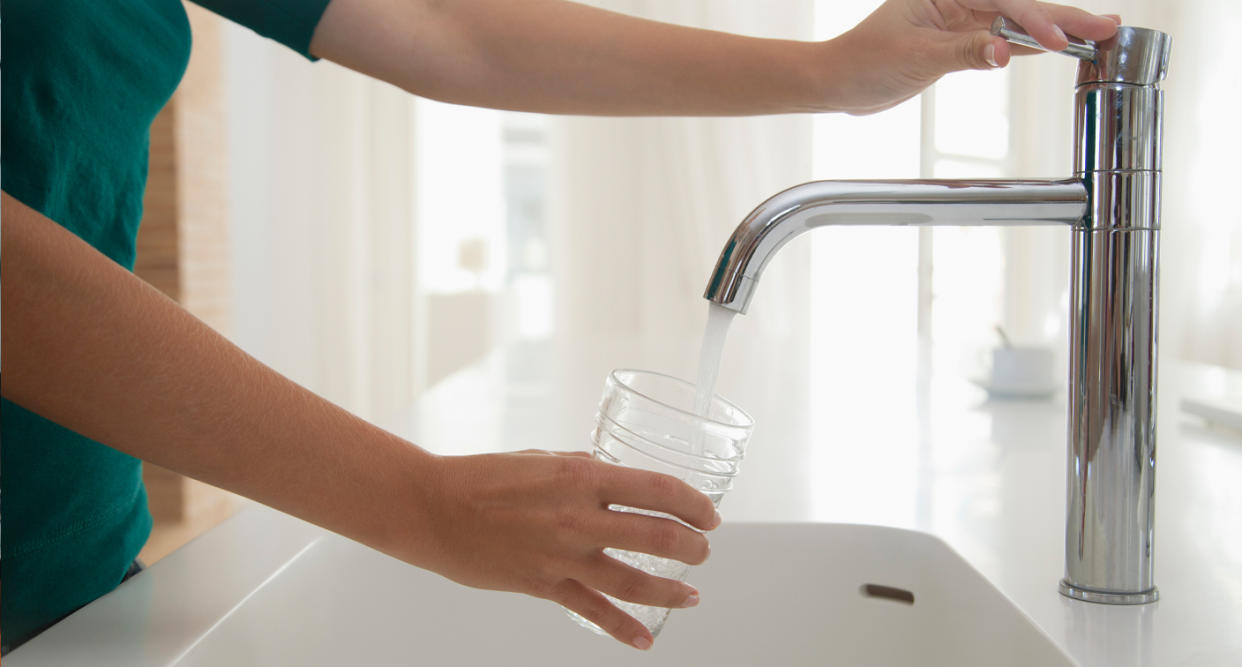How safe is your tap water? This database can tell you

If you’ve ever wondered how safe your tap water really is, you can now find out. The Environmental Working Group (EWG) released its updated Tap Water Database on Wednesday, which allows people to discover which contaminants are in their local tap water and how it may affect their health.
In the database, people can search by ZIP code or state to find their local utility, then can click on the individual contaminants detected in their water to find out more about them and their health risks.
The Tap Water Database contains data from nearly 50,000 local utilities in 50 states, and features water quality tests conducted by water systems from 2012 to 2017. Also included are a total of nearly 32 million test results for 525 chemicals — 284 of which were detected in U.S. drinking water, according to the EWG.
“People take clean water for granted,” Tasha Stoiber, PhD, a senior scientist at the EWG, tells Yahoo Lifestyle. “Most of the systems in the U.S. do pass federal drinking water standards, but that doesn’t mean it’s entirely safe, especially for more susceptible groups, which could include pregnant women, children or those with compromised health states. Even low levels of contamination could cause harm to your health. Water quality could be much better.”
In fact, a recent study published in the journal Heliyon found that cancer-causing contaminants may already be in drinking water. Scientists at the EWG analyzed pollutants in tap water from 2010 to 2017 and found 22 carcinogenic contaminants — including arsenic, disinfection byproducts and radioactive contaminants such as uranium and radium — in drinking water across the U.S. The researchers estimated that, over the course of an average lifetime, the contaminants could lead to 100,000 cases of cancer.
The EWG believes that the government should be doing more to make sure that tap water is safe. “That’s why we want people to know about their water and want to start a conversation about drinking water in the U.S. and what can be done to improve it,” says Stoiber.
The Safe Drinking Water Act — which allows the Environmental Protection Agency (EPA) to “set national standards for drinking water to protect against health effects from exposure to naturally-occurring and man-made contaminants” — was enacted by Congress in 1974. The last time the act was amended and reauthorized was in 1996.
“There hasn’t been a federal drinking water standard passed for nearly 20 years,” stays Stoiber. “We currently have outdated drinking water regulations that could be more protective of our health.”
The EWG also states that there are “no legal limits for more than 160 unregulated contaminants in U.S. tap water.”
According to the EWG, “The vast majority of the nation’s drinking water supplies get a passing grade from federal and state regulatory agencies. But many of the 278 contaminants detected by local utilities’ tests are found at levels that may be legal under the Safe Drinking Water Act or state regulations but are well above levels authoritative scientific studies have found to pose health risks.”
Stoiber hopes the database encourages people to learn more about what’s in their tap water and to get more involved. “We definitely want people to ask their local officials, ‘What more can be done?’” she says. “‘Why are there contaminants in my water? What are we doing to remove them? How can we better protect drinking water sources?’”
So what can people do if they find contaminants in their drinking water in the meantime? Get a good water filter. The EWG offers a water filter guide to help people find the right one based on the contaminants in their local drinking water.
Read more from Yahoo Lifestyle:
Follow us on Instagram, Facebook and Twitter for nonstop inspiration delivered fresh to your feed, every day.

